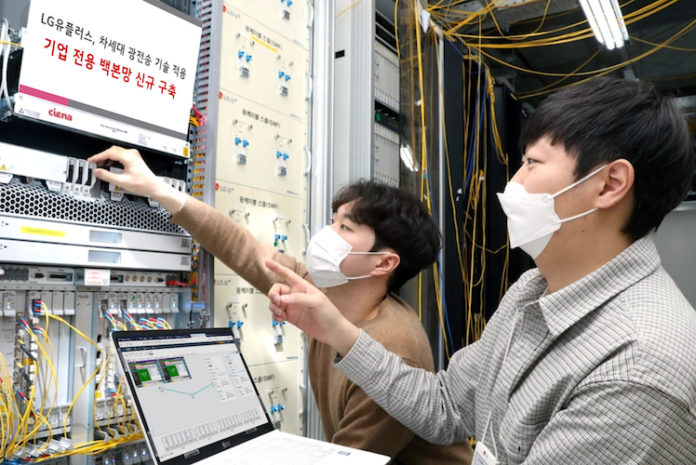LG U+ is building in South Korea a dedicated, nationwide ROADM backbone network to satisfy the needs of customers and respond to increased traffic amid the widespread adoption of remote means of doing business.
For this project, LG U+ chose Ciena’s WaveLogic 5 Extreme and WaveLogic Ai coherent optical solutions.
“Amid the expansion of cloud services such as telecommuting, video conferencing and remote classes, we are building a new backbone network that can accommodate the needs of various corporate customers,” said Sung-cheol Koo who’s in charge of LG U+’s wired business.
“With a flexible and stable transmission network, we expect that companies can provide a higher level of service,” said Koo.
With rapidly increasing traffic, Ciena will enable LG U+ to transmit single-carrier 600G wavelengths over the new flexible grid backbone that has six times the network capacity compared to the existing network.
The new backbone network will provide enhanced availability through low-latency, multiple route diversity and direct connections between large cities without the need for regeneration.
Also, LG U+ is in the process of implementing a major capacity upgrade, including multi-terabits of additional capacity, to accommodate large-capacity customers and enable stable traffic management.
By applying OTDR (Optical Time Domain Reflectometer) technology to all sections of the backbone network, real-time and intuitive line condition monitoring is possible to shorten troubleshooting time and enable smooth network management and operations.
Further, Ciena’s 6500 ROADM equipment can reliably configure DR (Disaster Recovery) line services to public government, financial institutions and compute centres of large enterprises through third party interworking certification.
LG U+ can also provide a dedicated line service with enhanced security through optical transport encryption.
The carrier will be using Ciena’s Manage, Control and Plan (MCP) SDN controller to be able to automate service delivery via next-generation OPEN APIs to improve customer experience and increase operational efficiencies.
















